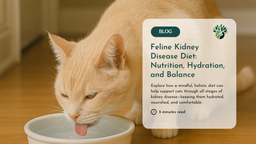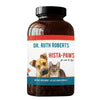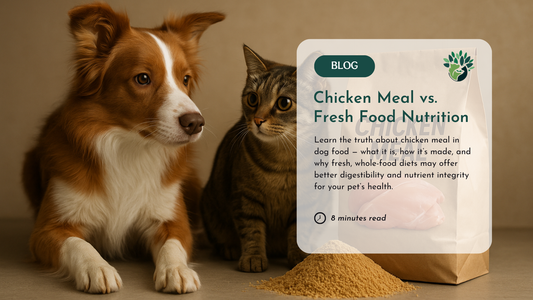Did your dog just eat chocolate? Don’t panic, but act fast! April is National Pet First Aid Awareness Month, making it the perfect time to learn how to handle emergencies like this.
Chocolate poisoning can cause vomiting, seizures, and other life-threatening complications. If you're wondering what to do if a dog eats chocolate, this guide will walk you through the essential steps—from immediate actions to veterinary care and prevention tips.
Why Is Chocolate Poisonous to Dogs?
Chocolate is harmful to dogs because it contains two toxic chemicals: theobromine and caffeine. Theobromine is the most dangerous because dogs cannot break it down as quickly as humans can. It stays in their body for a long time—up to 17.5 hours—and can cause serious health problems.
Theobromine affects the heart, brain, and muscles, making a dog's heart beat too fast and leading to tremors, shaking, muscle spasms, or even seizures. It also increases urination and can cause dehydration.
While caffeine leaves a dog's body faster (about 4.5 hours), theobromine can last for up to 72 hours in severe cases.
Which Types of Chocolate Are the Most Dangerous?
If your dog licked chocolate off a spoon or a plate, it’s important to consider the type. Here’s a general ranking from least toxic to most toxic:

What to Do If a Dog Eats Chocolate: A Step-by-Step Guide
If a dog eats chocolate, act immediately. Follow these steps to protect your pet:
1. Determine What and How Much Was Eaten
The first step in what to do if a dog eats chocolate is determining how much was consumed and what type. Estimate how much was consumed and consider your dog’s size—smaller dogs are at greater risk from even a small amount.
2. Watch for Symptoms of Chocolate Poisoning
If your dog eats chocolate, symptoms can show up within a few hours. These symptoms include vomiting, diarrhea, restlessness, a fast heart rate, tremors, and seizures.
Even if the dog looks fine at first, the poisoning can get worse over time. Don’t wait for symptoms to show before taking action.
3. Call a Veterinarian Immediately
Many pet owners ask, 'My dog ate a tiny piece of chocolate—do I need to call the vet?' While small amounts of milk chocolate may not always be dangerous, it’s best to consult your veterinarian.
Contact your vet or the Pet Poison Helpline at (855-764-7661). Provide details about the type and amount of chocolate your dog ate, their weight, and any symptoms. Your vet will determine if treatment is necessary.
4. Induce Vomiting (Only If a Vet Advises It)
If your vet recommends it and the chocolate was eaten within the past hour, you may need to induce vomiting using 3% hydrogen peroxide. The standard dose is 1 teaspoon (5 mL) per 10 pounds of body weight.
WARNING: Do not induce vomiting if your dog is unconscious, having seizures, or struggling to breathe.
5. Keep Your Dog Hydrated and Monitor Their Condition
Encourage your dog to drink water to help flush out toxins. Continue monitoring for symptoms and seek veterinary care even if vomiting occurs, as additional treatment may be needed.
6. Prevent Future Incidents
Even if your dog ate a tiny piece of chocolate and seemed fine, prevention is key. Keep all chocolate products stored safely and remind family members not to share sweets with pets. Also supervise children to ensure they don’t accidentally share chocolate with your pet.
5 Natural Remedy for Dog Eating Chocolate
There are a few natural remedies that may help reduce the toxic effects:
1. Activated Charcoal
Activated charcoal acts like a magnet, grabbing toxins so the body doesn’t absorb them. It’s often given after vomiting to help remove any poison left in the stomach. People and animals have used it for centuries, and it’s still a trusted treatment for poisoning today.
2. Ginger
Ginger has calming properties that can relieve bloating, gas, and stomach irritation. This is beneficial for dogs that have vomited and are experiencing nausea.
3. Milk Thistle
Milk thistle can be beneficial after a critical phase to help the liver recover from toxin exposure. Its active compound, silymarin, is one of the most well-known substances for supporting liver health, as it helps to protect and regenerate liver cells.
4. Dandelion Root
Dandelion is a widely recognized herb that supports both kidney and liver health, making it a great choice for promoting natural detoxification. As a natural diuretic, it helps flush toxins from the kidneys and supports liver function.
5. Probiotics for Gut Support
After the incident, adding a probiotic supplements can help restore gut health, especially if after vomiting or diarrhea.
Conclusion
If your dog eats chocolate, don’t panic—but act fast. Assess the situation, call your vet, and follow their guidance to prevent serious complications.
Natural remedies like activated charcoal and liver-supporting herbs may aid recovery, but they should only be used under veterinary supervision.
The best way to protect your dog is through prevention. Keep chocolate out of reach, educate your family, and be extra cautious during holidays when sweets are more accessible.
















